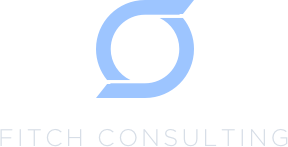Dynamic Coaching for a Dynamic Workplace
Positive leadership and a healthy management approach are vital to business success. Competent, consistent coaching is another essential — and often elusive — element for encouraging employee alignment, skill development, and productive collaboration in a dynamic workplace.
How does workplace coaching work?
There are two ways to instill a culture of coaching in your organization. One, implement a formal workplace coaching program with professional coaches. Two, train your managers to give feedback and develop their employees using coaching strategies. The best coaching cultures use a mix of the two — and democratize the experience by opening it to everyone.
When to engage professional coaches
A formal workplace coaching program sets the proper tone for an environment of open communication and creative collaboration. Whether your business seeks to welcome and train new employees, prepare people for the next steps in their careers, or guide and advise existing teams, coaching is a useful tool for professional development and organizational alignment.
An effective coaching program enriches employee experience by:
Helping with skill development
Using positive feedback and supportive engagement
Modeling good work habits
Practicing patience and guidance
Implement a professional coaching program with intention to empower your employees for success. An inspired, engaged workforce is your organization’s most valuable asset.
Training your managers as coaches
To infuse coaching into your company culture, train your managers to integrate coaching practices into daily management interactions. Effective coaches lead with curiosity, adopt a positive approach, and listen more than they talk. Coaching is much more about guiding than directing. Effective coaches know lecturing, refusing to delegate, issuing orders, and using derogatory language inhibit collaboration and productivity efforts. None of these tactics are as powerful or effective as guiding a person to discover their own solutions to challenges. Consider these strategies:
Ask effective questions. A good question shows forethought and develops organically into engaged conversation. Good questions are open and leave space for an authentic response. Ask employees for their ideas about improving processes. Invite creative thinking and constructive feedback on any areas of interest or concern. Answer questions in return.
Practice good listening. Be available. Stay present, focused, and engaged in conversations with your team members. Use verbal and nonverbal cues to demonstrate interest. Set aside other tasks and be attentive. Practice listening with intention and purpose. Ask questions to clarify and ensure mutual understanding.
Use positive reinforcement. Encourage engagement with a positive, open response. Treat mistakes as learning opportunities, and your team members will feel comfortable asking for assistance and accepting help.
Coaches and team leaders set the tone for dynamic alignment in your organization. When employees feel appreciated, invested, and empowered to learn without judgment, they understand the significance of their contribution.
Coaching at every level
Coaching is valuable for improving productivity and alignment at every level of an organization. Good coaches have something to offer employees at every stage, and the best coaching organizations open the experience to people at all levels. The needs of employees differ by organization, team, and individual, but these five general levels — novice, doer, performer, master, and expert — are good reference points to keep in mind for meeting team members where they are.
Novices are beginners — learning the lay of the land and the scope of their role. Coaches are full-service guides at this level. With consistent, comprehensive instruction and constructive feedback, most employees move through this stage quickly.
Doers are still learning, but they know enough to contribute to team productivity. Coaches still provide steady guidance and focus on recognition, reinforcement, and encouragement.
Performers don’t require as much active coaching. They are comfortable with their workflows and possess most or all the skills of a productive team member. Coaches remain available but shift their primary focus to feedback.
Masters are proficient, efficient, and effective employees. With a sophisticated understanding of their role in team and company success — and the right training — masters are well-positioned to begin coaching others.
Experts are often front-line leaders. They are self-sufficient, well-aligned with team and organization goals, and typically make excellent coaches themselves.
Dynamic coaching for a dynamic workplace
Coaches provide employees with the support they need to successfully navigate the workplace and their own careers. With a positive coaching experience, employees gain confidence and capability quickly — improving outcomes for communication, creativity, collaboration, and alignment. Coaching programs begin with guided autonomy and result in employee empowerment and organizational success.
Visit fitch-consulting.com to learn more about empowering employees and encouraging alignment with dynamic coaching.




